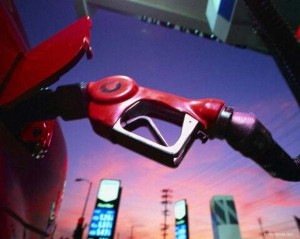An estimate 30.9 million families will head out on the highway over the long Memorial Day holiday, the traditional start of the U.S. summer season.
The figure is down about 100,000 for last year, according to a survey by AAA – and that’s no surprise considering the current, near-record price of gas, which the organization pegs at around $3.91 a gallon. A full 40% of those who might consider a trip of at least 50 miles say that fuel prices are influencing their plans for the long weekend, though nine in 10 who will be going somewhere say they are planning to travel by car.
If you’re among the many who’ll be heading out on the highway, you can rein in your fuel costs with some surprisingly simple steps that will also help when you’re back home and commuting to work.
Indeed, Chevrolet just completed a test to see just how much it could improve the mileage of its Cruze LT. The compact sedan is rated by the EPA at 24 City, 36 Highway. But one fuel economy engineer, Ann Wenzlick, was able to squeeze out an average 37 mpg, while her colleague, Beth Nunning, only managed to get 21 mpg.
On a 1,000 mile holiday journey, the difference is substantial. Wenzlick would need just 27 gallons, costing $105.66 at the average fuel price quoted by AAA. Nunning, on the other hand, would use 47.6 gallons, for a cost of $186.19. Even on a 500-mile jaunt, the difference would cover a lunch stop for a family of four.
How did the same car yield such significant differences in mileage? Here are five tips to improve fuel economy from Wenzlick:
- Pull over, rather than waiting in the drive-through lane. Idling your car for just 15-minutes will burn a quarter-gallon of gas, “adding another $1 to the cost of your latte,” she says;
- Drive 70, not 80. On a 500 mile drive the difference is barely an extra hour on the road, but it can add a full 4 mpg to your fuel economy;
- Use cruise control, which will maintain a steady speed and prevent those subtle, fuel-sucking surges in speed;
- Take it easy, Wenzlick suggests, noting that aggressive driving can reduce mileage by 20%; and
- Roll up the windows. It may seem counter-intuitive but today’s air conditioning system is far more efficient than you’d think, and at highway speeds, open windows suck fuel by reducing a vehicle’s aerodynamic efficiency.
How did Nunning wind up wasting so much fuel? Chevrolet points to five things that hurt her mileage:
- Her tires were significantly under-inflated, with a tire 10 psi below the recommended pressure likely to reduce your mileage by 3%;
- She carried too much junk in the trunk. That bag of sand, the firewood you forgot to unload, every extra 100 pounds in a car is likely to reduce fuel economy by 2%;
- Get those roof ornaments and ski racks off your car. Sure, maybe you want to fly the pendant of your favorite team, but something that small can have a surprisingly big impact on mileage;
- Don’t plan your trip. A car running at its optimum operating temperature gets up to 50% better mileage than one that’s cold. And even on a long trip, you can shorten your run by simply planning ahead;
- Ignore your engine warning light. Nunning found that by ignoring a problem she increased her fuel consumption, at one point, by up to 40%.
Even on a weekend adventure, these tips can save significant amounts of fuel. When you’re talking a regular commute, the savings are even more obvious. Worked out on over the course of an entire year – the typical motorist clocking 15,000 miles annually – Wenzlick would save nearly 300 gallons of gas, or $1,200 – a nice chunk of change that could cover her next holiday vacation.

